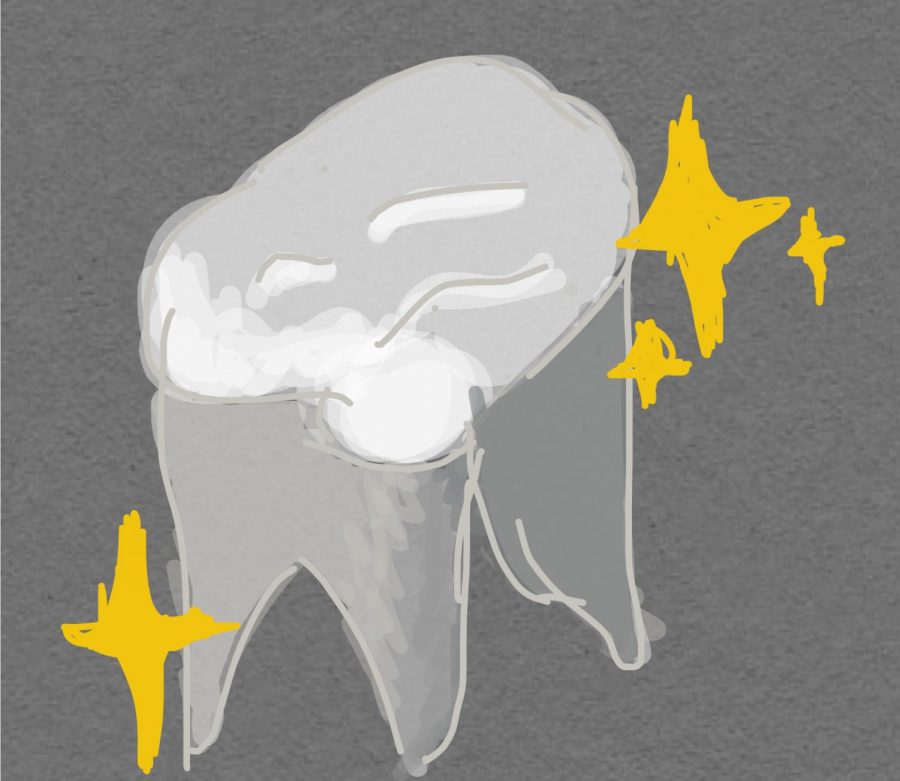Braces and the American Teen
Bracing for the Perfect [American] Smile
Is the ideal smile worth it?
Any rancher worth their salt will tell you that a great deal about any animal’s health can be deduced by the state of their teeth. Decaying gums and loose molars probably indicate problems elsewhere in the livestock’s body, whereas straight and strong pearly whites signal to the buyer whether a horse is worth a second look. But humans are not horses, so how in the world did we begin evaluating others on something so random?
Approximately 80% of American 12-18 year olds are currently sporting a pair of braces and 84.9% are very well acquainted with their dentists’ check-up room. According to the American Association of Orthodontics, there are 3 million Americans under the age of 18 wearing braces. However, while braces are usually associated with growing up, this decade is the first in which a full four fifths of the population has grown up with braces, each generation with progressively more dental savvy than the last.
The common wire and plastic contraption we commonly refer to as braces actually has many different moving parts. Sometimes a child only requires brackets, wires, and rubber bands. Brackets clamp onto teeth in the front or the back and are connected by rubber bands and wires, the latter of which is tightened at periodic orthodontist visits until teeth grow properly. At most, kids have to wear headgear, which generally applies pressure to back teeth, as they sleep.
Usually those who begin treatment resign themselves to braces for a very, very long time. This is due, in part, to how our mouths are structured. Since each tooth has a nerve ending, or pulp, deep behind the outer enamel coating, individual teeth must each be painstakingly nudged into the right alignment to avoid cutting off the blood flow all at once with a sudden readjustment.
Traditionally, straight, white, and perfect smiles were only limited to those who happened to be born with just-right teeth, but an increase in median income is often enough to convince parents to ‘give their children a chance they themselves never had’. Now families are willing to pay up to 3,000 dollars for the most basic dental devices, although it often comes to much more. On top of the upfront out-of-pocket expense, parents have to budget time for shuttling their children to and fro the orthodontist office every several weeks during one’s time in braces.
For some, having braces is not enough to have perfect teeth: doctors also have to prescribe a retainer or a specially calibrated piece of plastic to ensure teeth do not grow back to the original configuration. The majority of American teenagers first encounter strong pain relief medications in undergoing orthodontic procedures, which is particularly cause for concern as the recommended age for first-time orthodontist checkups decreases from seven years old.
In fact, the orthodontist business is a self-propagating industry since the practice of braces is more and more being recommended for young children, whose developing bones make the process of judging correct individualized treatments that much more difficult. Naturally, the risk of misdiagnosing a child’s dental problem, if any are present, leads to longer time spent in braces overall once additional corrective measures are put in place. Even those with everything progressing as it should need to pay visits to their orthodontist often for getting their braces tightened, which involves attaching smaller and smaller rubber bands until teeth are in the proper position.
Only 16.9% of children between 2 and 19 years old actually need braces for time-sensitive morbidities like oral cavities of caries. Dentists regularly recommend children with slight lisps as prime candidates for braces, despite the possibility that such issues correct themselves as a child ages, indicating that perhaps Americans are too eager for the latest quick fix.
Ironically, a two-year system meant to align and strengthen teeth tends to accomplish just the opposite. For instance, in some cases, dentists even prescribe that one or two teeth should be removed for the visible portion in a person’s mouth for the optimum ‘orofacial’ appearance. Plus, nearly every child who acquires braces is obligated to brush and floss more and more vigilantly, since wired devices are prone to trapping food particles. As a result, cavities have the potential to multiply unexpectedly while braces are in place, sometimes doing just that in spite of adherence to extreme safety precautions like brushing after every time one eats.
When the drive to look perfect consumes so much of one’s time, Americans should evaluate just how much they are willing to change lifestyles in order to accommodate their bodies. In reality, the proceedings should be reversed: a person has more control than they think over what should or should not aggravate them when it comes to the skin they’re in.




